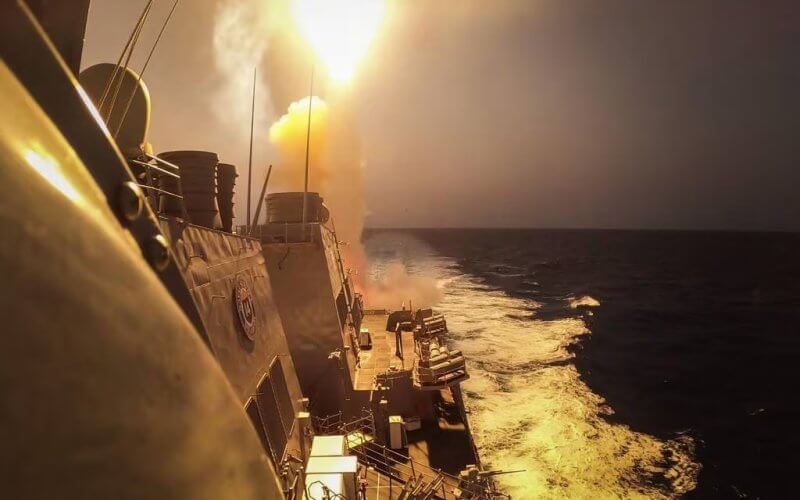By: Micaela Burrow, Daily Caller News Foundation
The Navy asked for $92.9 million beyond the Biden administration’s budget request for fiscal year 2025 to refurbish missiles it’s expending to defend against Houthi attacks, according to a report delivered to Congress on Monday.
Naval forces in the Red Sea at this point are announcing almost daily incidents when they engage Houthi drones and anti-ship missiles aimed at commercial shipping and military vessels, in many cases using a missile known as the Standard Missile (SM) 2. The Navy’s Unfunded Priorities List nods to how quickly the U.S. has been expending the weapons, asking for additional money to resolve a backlog of older SM-2s that need to be recertified before they can be used in combat, according to the accompanying report.
The Navy has an inventory of SM-2 Block III and Block IIIA/B weapons, but they are “non-combat usable” until recertification, the Navy explained in the report. The extra funds are “to maximize capacity in FY25 and replenish combat usage quicker.”
“Navy continues to defend international sea lanes of commercial shipping in the Red Sea employing standard missiles against unmanned aerial systems, land-attack missiles, and anti-ship ballistic missiles,” the justification reads.
The president’s budget for fiscal year 2024 included $157 million for Standard Missile maintenance, while the fiscal year 2025 budget asked for another $134 million.
Priority for the SM-2 recertification could change “based on the duration and nature of conflict in the Red Sea and other areas of responsibility,” the report notes.
The outgoing head of U.S. military forces assigned to the Pacific region voiced concerns Wednesday about the cost of shooting down Houthi weapons. Many of the expensive weapons used to counter Houthi attacks could be used in the Pacific theater in a potential conflict with China, and the cost-benefit ratio does not favor the U.S., Adm. John Aquilino, told the House Armed Services Committee.
“Those missiles coming off those destroyers, those SM-2s, are resident in my theater, on my destroyers,” he said.
“We need to make sure that the capabilities I’ve identified are delivered at a relevant time and that we ought to accelerate the technologies that get us back in the right place” cost-wise, he said.
Overall, the Navy submitted a $2.2 billion wish list in funding in hopes of filling the gaps created by operations in the Red Sea and several continuing resolutions that have delayed what the Navy sees as necessary investments in the submarine industry, the report shows.
The $2.2 billion would supplement, not replace the $257.6 billion included in the Biden administration’s budget request.
However, Chief of Naval Operations Adm. Lisa Franchetti noted in a preface to the report that officials created the Navy’s fiscal year 2025 budget under the assumption Congress would pass a fiscal year 2024 budget and the $105 billion national security supplemental request President Joe Biden submitted in October.
The supplemental devoted $3.3 billion to the submarine industrial base. If that doesn’t pass, the Navy said it needs $403 million to raise the 2025 budget to match the supplemental request.
Related Story: U.S. Coast Guard Seized Iranian Weapons in Red Sea Bound for Houthis in Yemen










